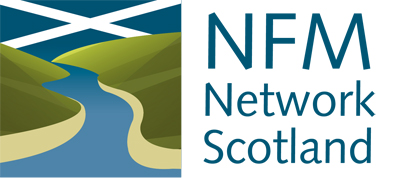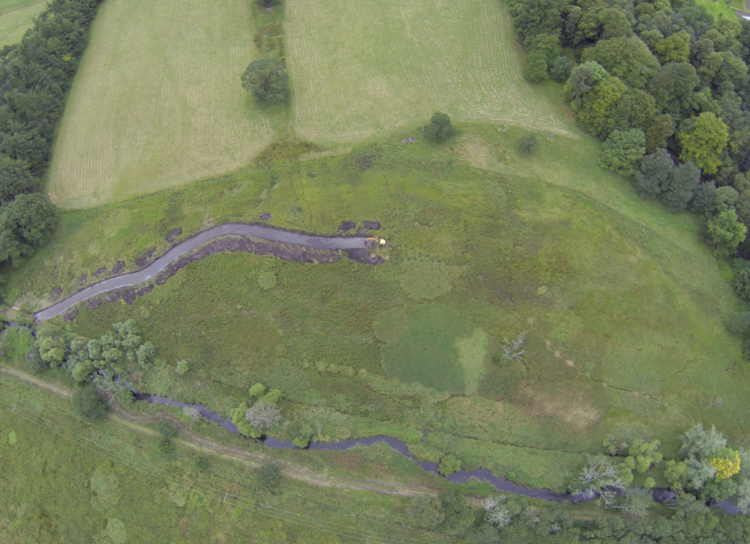Research findings just revealed by one of the EU North Sea Region Building with Nature partners in Scotland are revealing the true value of taking a sustainable approach to reducing flood risk - through the careful and targeted use of Natural Flood Management (NFM) measures, building with nature at a landscape scale across the whole Eddleston Water river catchment.
The Eddleston Water Project is Scottish Government’s long-term study on the effectiveness of utilising NFM to reduce the risk of flooding and to improve river habitats. It must be stressed that NFM measures are not used instead of existing means to protect properties and livelihoods, such as flood walls and Flood Warning systems, but work alongside these structural methods to provide a whole catchment approach to reducing flood risk to downstream communities and enhancing the local environment for wildlife.
As part of recent work in the Eddleston Water catchment, the project managers Tweed Forum commissioned consultants JBA and Mott MacDonald to explore the costs and benefits of using a range of NFM measures to reduce flood risk, and also to explore how this might be integrated in to standard methods used for assessing the value of different Options for reducing Flood risk at a scheme level. Of particular interest was how not only the value of flood damages avoided by the use of NFM measures might be costed, but also how the other added benefits delivered by some of the different NFM techniques (such as creating ponds, planting riparian woodlands, remeandering rivers, etc.) might also be valued.
As part of the project, a large number of methods for estimating the economic value of these benefits were critically reviewed and their advantages and challenges discussed with key stakeholders. The favoured method, B£ST was then tested on the Eddleston Water to trial its suitability. As a tool for comparing different flood risk options, It was found to be intuitive to use and the tool was able to reliably quantify all significant multiple benefits in the form of ‘ecosystem services’ delivered by the various NFM measures across the 69 km2 Eddleston Water catchment. To date, the project has planted over 330,000 native trees, installed 116 log structures in upland streams, built 29 flood storage ponds and re-meandered 2.9km of previously straightened and embanked river channels. Evaluation of their impact on flood flows showed that the value of flood damages avoided in downstream communities from these existing NFM measures is estimated as c.£950,000 (Net Present Value, using a 100-year appraisal period). In addition to flood risk reduction, this new work was able to show that these same NFM measures provide benefits across a wide range of other ‘ecosystem services’ including: Amenity, Biodiversity and ecology, Carbon sequestration, Education, Flows in watercourse, Water quality and pollution mitigation. These additional benefits provided by the NFM measures were estimated to be approximately £4.2m on top of the £950k already seen for flood risk reduction. Extending this to a hypothetical scenario with greater use of NFM measures across the catchment showed further gains could be possible; with flood damages avoided estimated at £2.85m and the benefit from other services estimated at £17.7m.
Summarising the results so far, Project manager for this work Chris Spray said ‘I guess the take home messages are probably threefold:;
- Building with Nature through the use of NFM measures across the landscape such as the ones we have already put in does make a difference in terms of their ability to reduce the risk of flooding downstream, and we can put a value on that – i.e. say how much this is worth in terms of net value for damages avoided;
- At the same time though, these NFM measures provide us with many other benefits (biodiversity, carbon, recreation, water quality, etc) – and we can now put a value on these as well; and
- We need to recognise these additional values provided by Building with Nature and somehow include them in the process of assessing which of a number of options we might wish to accept for flood risk reduction using (both NFM and Structural methods) – and that one way of integrating this in to standard procedures for flood risk appraisal would be to use the B£ST methodology.

